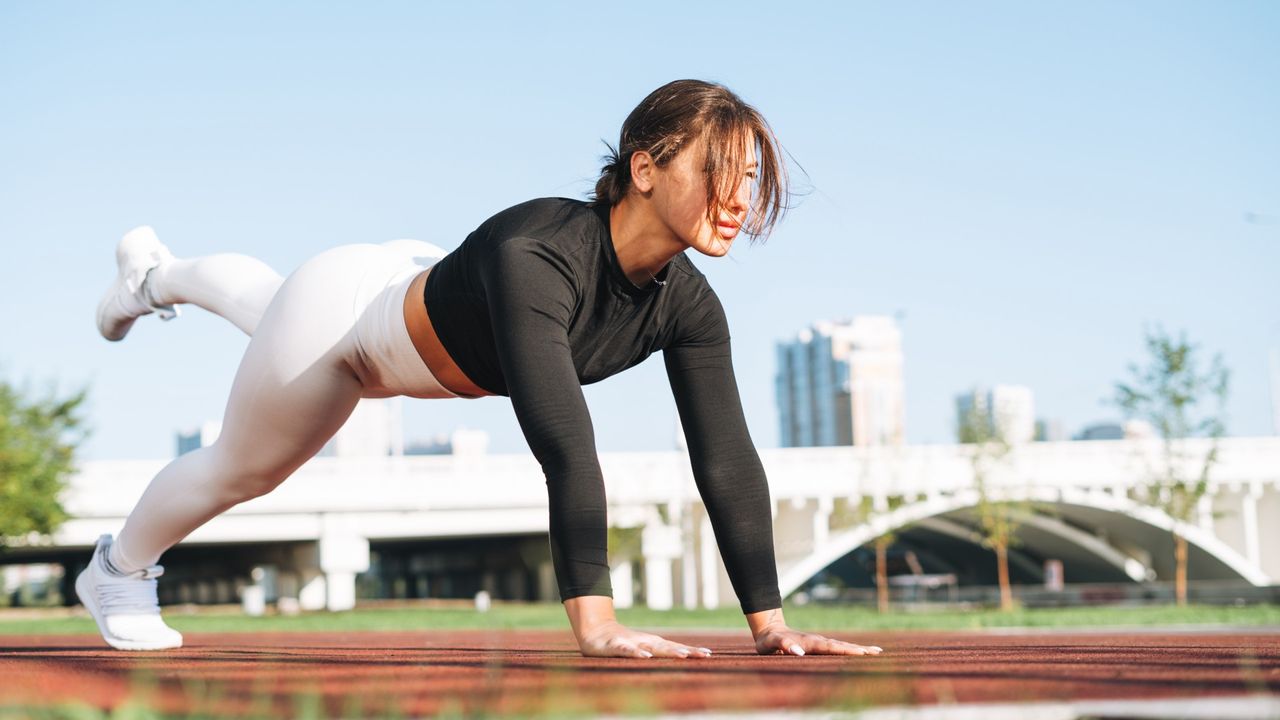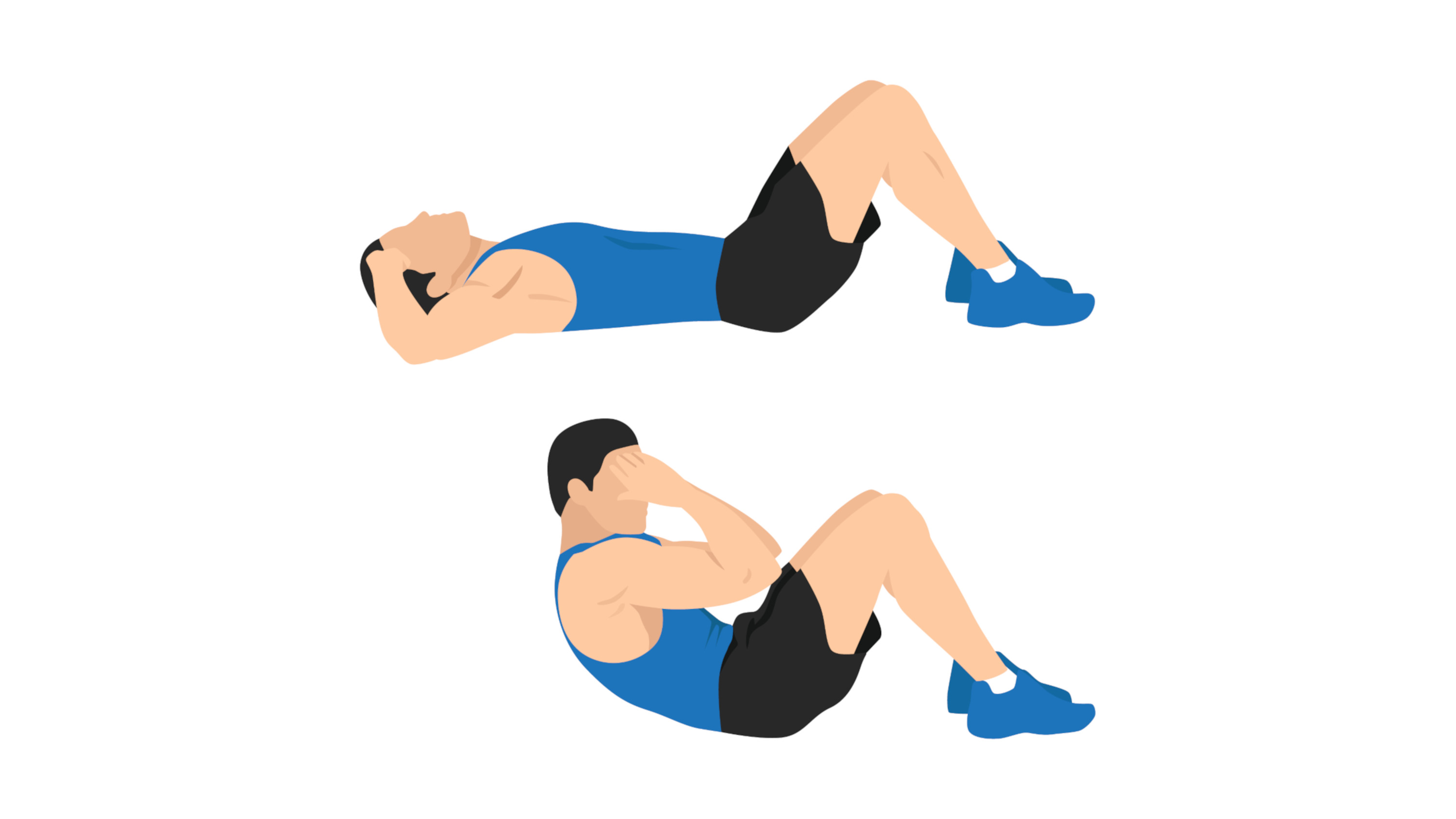
Hundreds of sit-ups aren’t the key to building a strong and injury-resistant core. Yes, this abs exercise is great at strengthening just that — your abs — but in the abs vs core muscles debate, it’s more important to strengthen your core as a whole unit instead, rather than just focusing on your abdominals.
Enter one of my favorite core exercises to teach — the runner’s plank. It’s kind to your lower back, rather than the repeated up-and-down motion of sit-ups, and it works the whole body, including your arms, hips and legs. I would recommend one of the best yoga mats for joint health (a thicker, plusher feel), but otherwise, you don’t need any equipment.
Planks challenge more than your abs, including the deeper, stabilizer muscles; this variation is known as an anti-rotation exercise, meaning you’ll use your muscles to hold the position without rotating to one side. If you feel ready to get started, here’s how to do the runner’s plank.
Are sit-ups safe for your lower back?

Yes, for many people, learning how to engage your core will help protect your lower back and make sit-ups more effective. But, if you suffer from back pain or pressure on your lumbar spine, it might not feel the most comfortable exercise, as you will repeatedly lift and lower your torso and flex your lumbar.
I always tell those that I coach the same thing: there are too many alternative core exercises out there to stick with ones that your body dislikes. If it hurts, swap it out. Simple.
Building a strong core will also help build strong abs, and this will help you control any exercise you perform, including lifting weights, running, other ab exercises, or even just completing daily tasks. Your core muscles keep you stable and balanced, which, in turn, keeps you injury-free while improving your posture.
How to do the runner's plank
To do this exercise, roll out an exercise mat for your elbows, then follow these steps:
- Start in a forearm plank with your elbows gently pressing into the mat and shoulders stacked over them
- Engage your core, thighs and glutes, and ensure your hips align with your shoulders. Look toward the top of your mat
- Extend your right arm behind you as you would while running, elbow softly bent, as if rowing your arm toward your hip
- At the same time, kick your left leg up behind you, knee bent
- The shape should resemble a still shot of someone mid-run, with one arm forward and one leg back behind the body
- Pause and hold for 5-10 seconds, then switch sides.
- Complete 3-4 sets.
Bottom line
Avoid rotating your body to one side, as it will feel very tempting while performing this plank. Your core muscles can act as anti-rotators, keeping your torso stable when your balance is challenged, like when lifting one arm and leg during a plank hold.
Think about your abs and the muscles that surround your lower and mid spine, which work together to achieve flexion and extension, and anti-flexion and anti-extension of the spine. Then, you have the lateral trunk muscles like the obliques, which are responsible for assisting side-bending and anti-side-bending.
Stability and control are key, and that’s the case with the runner’s plank. Think about all the directions your body moves during the day, and also how often you sit hunched over at a desk, watching TV at night, or texting on your phone. While not quite the same, sit-ups pretty much reinforce the reached-over position, so consider adding exercises to your routine that focus on extension of the spine and hips and don't involve sitting.
Extension of the hips also counteracts the impact of sitting all day, where the hips become inactive and weak; if you find yourself overcompensating with your hips during sit-ups, the runner’s plank will help move them through flexion and extension instead, keeping them active, but also reinforces learning to hold tension with your bodyweight, known as an isometric muscle contraction.
Overall, this move is better for full-body activation and teaches isometric and isotonic contraction, stability, balance and coordination. I can't say the same for sit-ups, but if you prefer them, why not try both?
More from Tom's Guide
Follow Tom's Guide on Google News and add us as a preferred source to get our up-to-date news, analysis, and reviews in your feeds. Make sure to click the Follow button!







